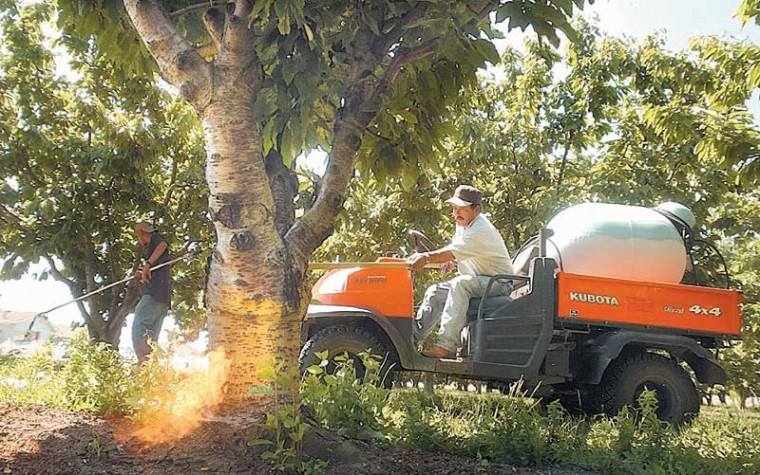
Hollister
– San Benito County orchards are expecting varying yields as
fruits are ripening and harvest times are on the horizon.
Hollister – San Benito County orchards are expecting varying yields as fruits are ripening and harvest times are on the horizon.
Apricot growers could have one of the better crops in recent memory, while some local cherry growers are reeling from the effects of a nationwide bee shortage. And many walnut orchards have yet to recover from the heat wave in 2006, which stunted growth, Agricultural Commissioner Paul Matulich said.
“So far apricots look good,” Matulich said. “Cherries are going to be light, walnuts are going to be light and apples are too early to tell.”
In 2005, the county’s more than 4,000 acres of orchard crops – which include apples, apricots, cherries and walnuts – were valued at $13 million. According to unofficial figures from the Agricultural Commissioner’s Office, the 2006 orchard crop will fall short of the 2005 value.
This year’s orchard bloom and fruit set were preceded by a chilly winter, which gave the trees adequate rest.
One crop to benefit from the cold winter is the local apricots.
George Bonacich, the president of the San Benito County Farm Bureau and local apricot grower, said this summer’s yield could be the best in more than five years.
The cold winter and dry spring helped Mark Gibson’s trees set so much fruit he had to thin more than half of his apricots.
Gibson is optimistic.
“The crop looks like it’s going to be good,” Gibson said.
However the county’s cherry and walnut crops could be light despite the favorable winter weather.
George Rajkovich, whose cherry orchards line Highway 25 just outside Hollister city limits, said the bee hives required to pollinate his cherries arrived late from the Central Valley.
Almond growers monopolized the hives through the county’s early stages of the cherry bloom, Rajkovich said.
“They weren’t released out of the almonds on time for us,” Rajkovich said.
In a good year, Rajkovich harvests about 120,000 packages of cherries from 225 acres.
Rajkovich said this year he’ll be lucky to get 25,000 packages.
“Of the 45 years I’ve been farming cherries in Hollister, this is the lightest,” he said.
With the cherry harvest beginning in three weeks, Rajkovich hopes late spring rains won’t crack what fruit he has left.
And although walnuts weren’t affected by bee shortages, many local trees seem to be suffering from July’s scorching heat.
Several walnut growers told Matulich that this spring’s bloom was uneven, with some of the nuts just recently beginning to develop.
Paul Hain, who grows organic walnuts, said the heat burned back tree growth in his orchards. Hain believes it’s too early to tell what kind of walnut crop he may yield.
Al Bonturi, who has been an orchardist in San Benito for more than six decades, said his walnut crop will be one of the lightest in memory. Much of his walnut crop has already dropped to the ground.
“There’s not much you can do,” Bonturi said. “You just go with what you’ve got.”
Last summer’s heat tricked the early variety walnuts into setting more fruit during the October harvest, Bonturi said.
“They were really confused,” he said. “I’ve never seen it before.”
Michael Van Cassell covers public safety for the Free Lance. He can be reached at 831-637-5566 ext. 335 or mv*********@***********ws.com.









